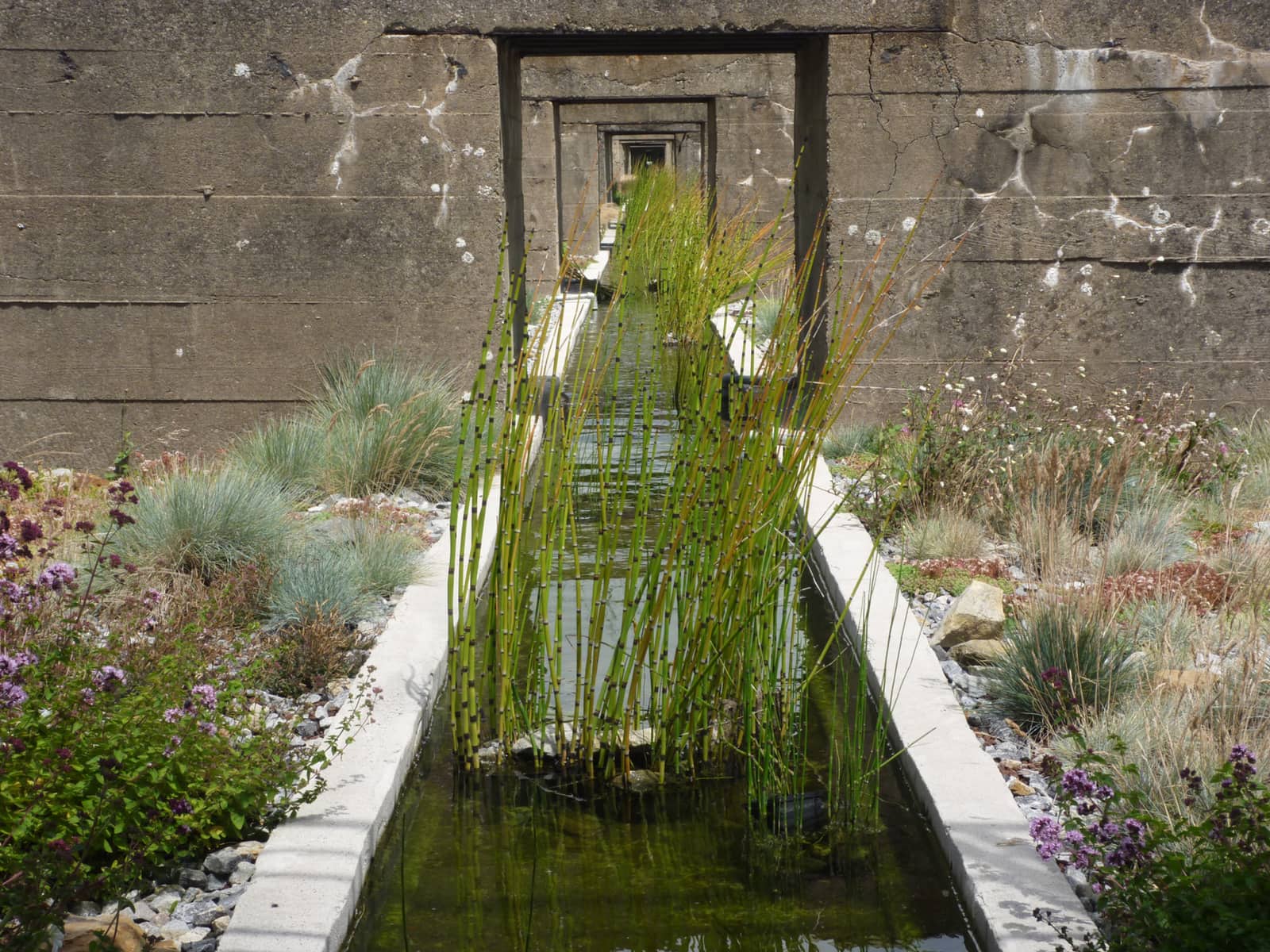Cultivating Indeterminacy in the Metropolitan Landscape
Downloads
DOI:
https://doi.org/10.7480/spool.2020.1.5478Keywords:
garden, interstitial, wildness, landscape architecture, metropolitan landscapeAbstract
This paper looks into ‘gardens of wildness’ that have been established in metropolitan interstitial spaces. These unused, unfunctional urban spaces could be considered as spatial-temporary interstices of the metropolitan landscape. These ‘interstitial spaces’ possess the potential to host diverse social-ecological minorities that tend to be excluded by regulated urban spaces. The ecological qualities of interstitial spaces are recognised by French garden designer Gilles Clément, who regards spontaneous ecologies, which emerge in neglected spaces of the city, as cherished reservoirs that diversify and sustain the urban ecology. Specifically, this paper discusses the value of making gardens of interstitial wildness. If the garden is a potential design approach magnifying the quality of the place, what would be the role of interstitial wild gardens? Furthermore, how do these gardens respond to the relationship between interstitial spaces and the metropolitan landscape? In this paper we will analyse Gilles Clément’s garden design of Jardins du Tiers-Paysage (Gardens of The Third Landscape), located on the roof of the repurposed submarine base of Saint-Nazaire (FR). Reading Saint-Nazaire’s urban context and examining the design from ecological and experiential points of view, this paper shows how the gardens re-introduce the submarine base as a place in the metropolitan landscape of Saint-Nazaire. Orchestrating the experience of the site’s spatial characteristics and the emerging wildness, the gardens elicit an appreciation of the autonomy of non-human agencies and simultaneously reflect upon the heterogeneity of the metropolitan landscape.
How to Cite
Published
License
Copyright (c) 2020 Sitong Luo, Klaske Havik

This work is licensed under a Creative Commons Attribution 4.0 International License.

References
Bianchetti, C. (2006). The third landscape. Retrieved from https://www.domusweb.it/en/reviews/2006/02/06/the-third-landscape.html.
Boukema, E., McIntyre, P., Vollaard, P., Broek, C., Tekstredacteur., Ball, G., & Le Roy, L. (2002). Louis G. Le Roy : nature, culture, fusion. Rotterdam: NAi Uitgevers.
De Certeau, M. (1988). The practice of everyday life. Berkeley: University of California Press.
Clément, G. (1991). Le Jardin en Mouvement [The Garden in Motion]. Retrieved from http://www.gillesclement.com/cat-mouvement-tit-Le-Jardin-en-Mouvement.
Clément, G. (1997). Le Jardin Planétaire [The Planetary Garden]. Retrieved from http://www.gillesclement.com/cat-jardinplanetaire-tit-Le-Jardin-Planetaire.
Clément, G. (2004). Manifeste du Tiers Paysage [Manifesto of the Third Landscape]. Retrieved from http://www.gillesclement.com/fichiers/_tierspaypublications_92045_manifeste_du_tiers_paysage.pdf
Clément, G., Morris, S. & Tiberghien, G. A. (2015). ‘The Planetary Garden’ and Other Writings. Philadelphia: University of Pennsylvania Press.
Cupers, K. & Miessen, M. (2002). Spaces of uncertainty. Wuppertal: Müller + Busmann.
Edensor, T. (2005). Industrial ruins: spaces, aesthetics, and materiality. Oxford, UK: Berg.
Foster, J. (2014). Hiding in plain view: Vacancy and prospect in Paris’ Petite Ceinture. Cities, (40), 124–132.
Gandy, M. (2013). Marginalia: Aesthetics, Ecology, and Urban Wastelands. Annals of the Association of American Geographers. 103(6), 1301–1316. London/ New York: Routledge.
Hemmings, S., Kagel, M., Hemmings, S., & Kagel, M. (2010). Memory Gardens: Aesthetic Education and Political Emancipation in the Landschaftspark Duisburg-Nord. German Studies Review, 33(2), 243–261.
Jacques, L. (2007). The planetary garden, garden unknown: on the work of landscaper Gilles Clément. In Conan, M. (Ed.) Contemporary garden aesthetics, creations and interpretations. Washington DC: Dumbarton Oaks.
Jorgensen, A. & Tylecote, M. (2007). Ambivalent landscapes—wilderness in the urban interstices. Landscape Research, 32(4), pp. 443–462. London/ New York: Routledge.
Lachmuth, S., Durka, W., & Schurr, F.M. (2011). Differentiation of reproductive and competitive ability in the invaded range of Senecio inaequidens: the role of genetic Allee effects, adaptive and nonadaptive evolution. New Phytologist. 192 (2): 529–541.
Petitjean, M. (2010). Le Jardin des Orpins et des Graminées: Compte-rendu d’intervention [The Garden of Orphans and Grasses: Intervention Report]. Unpublished manuscript.
Rahmann, H. & Jonas, M. (2014). Void Potential: Spatial Dynamics and Cultural Manifestations of Residual Spaces. In Mariani, M. & Barron, P. (Eds). (2013). Terrain Vague: Interstices at the Edge of the Pale. London/ New York: Routledge.
Ruff, A. (2002). Holland and the Ecological Landscape. Garden History, 30(2), 239–251. Retrieved from https://doi.org/10.2307/1587255
De Solà-Morales, I. (1995). Terrain Vague. In Mariani, M. & Barron, P. (Eds), Terrain Vague Interstices at the Edge of the Pale. p.40–46. London/ New York: Routledge.
Steenbergen, C. M., Reh, W., & Pouderoijen, M. (2011). Metropolitan landscape architecture: urban parks and landscapes. Bussum: Thoth Publishers.
Sukopp, H., Blume, H.P., & Kunick, W. (1979). The soil, flora, and vegetation of Berlin’s waste lands. In Laurie, I. C. (Ed.), Nature in Cities, pp. 115–132. Chichester, New York /Brisbane /Toronto: John Wiley & Sons
Vollaard, P. (2002). Time-based Architecture in Mildam. Louis Le Roy’s Ecocathedral (Ca. 1970-3000). In Louis G. Le Roy: nature, culture, fusion. Rotterdam: NAi Uitgevers.
de Wit, S. (2014). Metropolitan Gardens – gardens in the interstices of the metropolitan tissue. SPOOL, 1(1), 601-622. doi:10.7480/spool.2014.1.630



